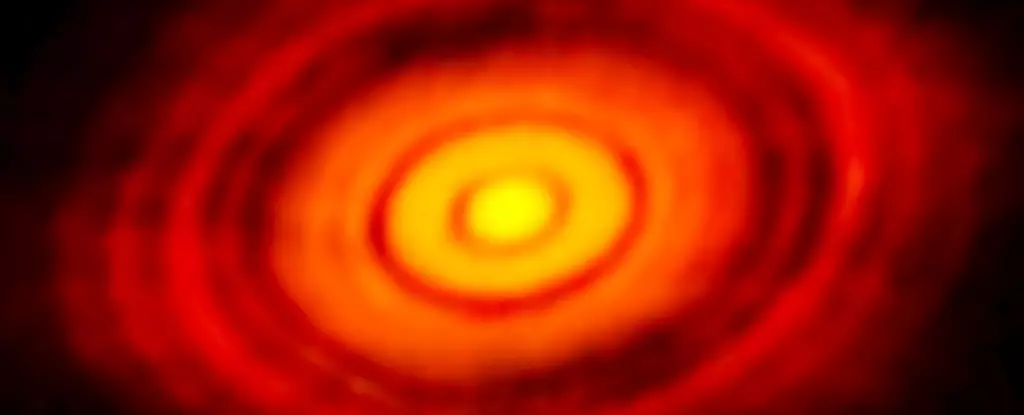New research presented at the American Astronomical Society’s 243rd Meeting suggests that planet formation around young stars may begin much earlier than previously believed. This groundbreaking study conducted using the Atacama Large Millimetre/submillimetre Array (ALMA) challenges our current understanding of planetary formation. The study focuses on the images captured by ALMA, revealing the presence of rings and gaps in Class 0 and Class 1 protoplanetary disks, which host extremely young stellar objects (YSOs). Let us delve deeper into the implications and theories surrounding these astonishing findings.
Traditionally, the presence of rings and gaps in protoplanetary disks has been associated with the formation of planets. However, the latest ALMA images show that these substructures exist even in extremely young solar systems. This revelation suggests that planet formation may commence much earlier than previously believed.
There are two prevailing theories regarding the formation of planets: core accretion and gravitational instability. Core accretion entails the gradual accumulation of a rocky core through the collision of planetesimals, followed by the attraction of a gaseous envelope. This theory is commonly associated with the formation of gas giants like Jupiter. On the other hand, gravitational instability posits that a protoplanetary disk reaches a critical mass, leading to the formation of gravitational clumps and fragments that eventually give rise to planets.
The discovery of rings and gaps in Class 0 and Class 1 protoplanetary disks challenges our current understanding of planet formation. Cheng-Han Hsieh, a Ph.D. candidate at Yale, suggests that core accretion may face difficulties in explaining the formation of giant planets within a million years. This suggests that gravitational instability may play a more significant role in early planet formation than previously thought.
While the ALMA observations provide invaluable insights, there are limitations to what can be detected. The angular resolution of the survey restricts the detection of substructures larger than 8 AU (astronomical units). For perspective, the distance between the Sun and Saturn is approximately 9 AU. Therefore, substructures larger than this distance can be detected. However, it is essential to consider that substructures in early systems may be smaller and thus undetectable using current methods.
Ethan Siegel poses a crucial question regarding the observed substructures. Are they definitive evidence of planet-forming structures, or could they be transient features that will dissipate over time? Hsieh explains that observations alone cannot ascertain the origin of these substructures. Simulations indicate that both planets and instabilities within the disk can give rise to rings and gaps. Further research is necessary to determine the cause of these substructures conclusively.
Regardless of their origin, the detection of rings and gaps in protoplanetary disks is noteworthy. These substructures indicate that the disk has reached a state of relative calm and turbulence has subsided, essential prerequisites for planet formation. Whether the observed substructures are planets or instabilities, their presence provides a valuable time scale for the initiation of planet formation. The images captured by ALMA show that this process can commence within approximately 300,000 years into the life of the young stellar object hosting the disk.
The recent ALMA observations present a paradigm shift in our understanding of planet formation. The presence of rings and gaps in Class 0 and Class 1 protoplanetary disks challenges the previous belief that planets form at later stages. While the exact cause of these substructures remains uncertain, their existence signifies a critical milestone in the evolution of protoplanetary disks. Further investigations and future observations are necessary to unveil the true nature of these substructures and gain deeper insights into the intricate process of planet formation.


Leave a Reply